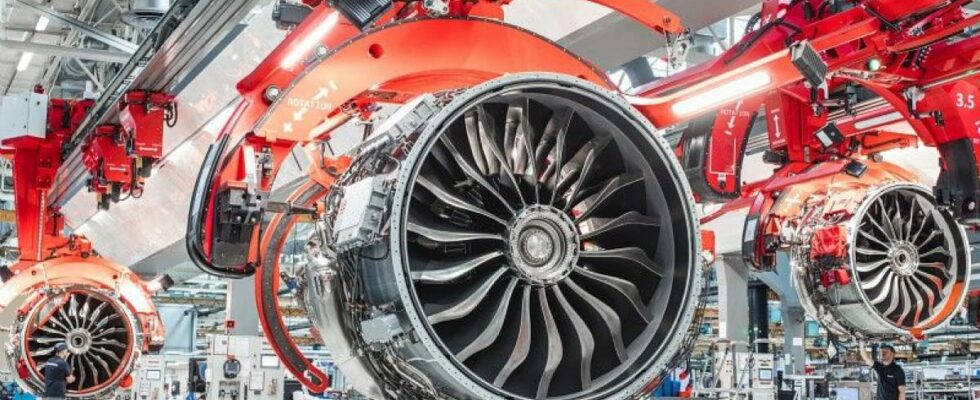(AOF) – Safran Helicopter Engines, along with TotalEnergies and Airbus Helicopters, supported the Directorate General for Armaments (DGA) in conducting the first test flight of an NH90 helicopter, during which one of its two RTM322 engines ran on sustainable aviation fuel (CAD). This fuel was produced by TotalEnergies from used cooking oils using HEFA technology (hydrotreatment of oils and fats).
This fuel has a carbon footprint four times smaller than that of a fuel of fossil origin, thus meeting the criterion of a 65% reduction required by the European Union for low-carbon fuels.
This test flight, which took place on February 3, 2023 in the facilities of the DGA Flight Tests expertise and test center in Istres, is a first with such a high content of sustainable fuel for a military helicopter and without engine modification.
The fuel used contributes to the objective pursued by the aeronautical sector to accelerate its decarbonization, and does not require any modification, whether on the aircraft, the engine or the logistical infrastructures (so-called “Drop-In” fuel).
AOF – LEARN MORE
Key points
– Third aerospace supplier: world number 1 in civil aircraft engines, turbines and helicopter flight controls, power transmissions, aircraft engine nacelles, number 2 in space engines and number 4 in military engines… ;
– Activity of €15.3 billion, organized into 3 divisions: aeronautical and space propulsion (48%), equipment & defense (41%) then Aircraft interiors;
– Business model in 4 pillars: refocusing on civil aviation with the acquisition of Zodiac Aerospace, strengthening of propulsion and equipment, with the objective of becoming the world’s number 1 aeronautical equipment manufacturer by 2035, historic partnership with GM, until 2040 on the civilian CFM56 engine, gradually replaced by the Leap engine and ramp-up of services (57% of sales), better margins than original equipment;
– Non-operable capital (11.2% of shares for the State and 7% for employees), Ross McInnes chairing the 18-member board of directors and Olivier Andries managing director;
– Healthy balance sheet with net debt reduced to €425 billion at the end of June (leverage of 1.13), free cash flow of €1.7 billion and cash of €6.2 billion.
Challenges
– 2022 strategy to increase competitiveness and lead the more electric aircraft, with annual revenue growth of 4 to 6%, an operating margin of between 16 and 18% and R&D expenditure of between 6 and 7% of turnover;
– Innovation strategy driven by R&D exceeding €1.4 billion and financially supported by the French State, with a portfolio of +13,000 patents (540 applications in 2021):
– 2 “Safran Tech” R&T centers in Saclay and Gennevilliers: energy and propulsion, materials and processes, sensors, electrical and electronic systems, signal and information processing, modeling & simulation and future turbine blades,
– platforms with specific equipment for new generation materials,
– consolidation of additive manufacturing processes in Haillan, with a view to their industrial deployment,
– strategic partnerships – the European “Clean Sky”, Saclay, INSALyon, ASTech…:
– Environmental strategy with reinforced 2030 objectives:
– 50% reduction vs 2018 in carbon emissions,
– mobilization of the 400 main suppliers,
– “low-carbon” disruptive aircraft by 2035, integration of sustainable fuels,
– CFM RISE program to reduce engine emissions by +20%;
– Order book at 4 times annual sales and recurring after-sales turnover for propulsion (2/3 of revenues);
– More favorable market environment – air traffic back to nearly 90% of 2019 levels and CFM flight cycles;
– Rotation of the portfolio with 3 recent acquisitions -Orolia, 63% of Celas and Aubert Duval-, the sale of the “Arresting systems” activity and the integration, in 2023, of the aeronautical electrical systems activity of Thalès (124 M € of sales).
Challenges
– Russia-Ukraine war: titanium supply risk, including the charge of depreciation, for €160 million, through cost savings;
– 2022 expectations: inflation and shortage of materials/components but gradual improvement in air traffic resulting in a 20% increase in R&D and 40% in investments;
– After a 26.4% increase in sales at the end of September, 2022 objectives raised for the second time by a turnover of around 19 billion, an operating margin of around 12.6% and free cash flow of +2 €.4 billion;
– Expectation for 2022 of a return to the historical practice of a distribution rate of 40%.
The end of a duopoly?
For several decades, the American Boeing and the European Airbus have shared 99% of the world market for airliners with more than 110 seats. This market weighs more than 100 billion dollars per year. However, this duopoly seems to be weakened in 2022 for several reasons. First, for the first time, two medium-haul single-aisle aircraft, the Chinese Comac’s C919 and the Russian Irkut’s MC-21, are about to enter service. Added to this is the Boeing 737 MAX crisis. With the cessation of deliveries of this aircraft between 2019 and 2021, the production balance has been broken. In 2021 Boeing posted 340 deliveries, with Airbus remaining well ahead with 611.
